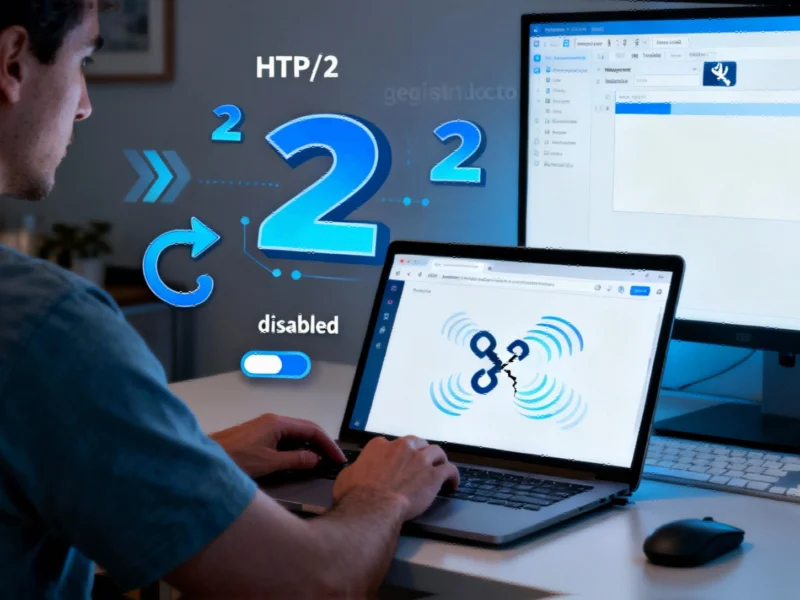Advancing Quantum Simulation Capabilities
In a significant leap forward for quantum computing applications, researchers at quantum computing company Quantinuum have successfully simulated a simplified version of the Sachdev-Ye-Kitaev (SYK) model using trapped-ion quantum processors. This achievement represents a major milestone in simulating strongly interacting quantum systems that have previously remained beyond the reach of classical computational methods. The breakthrough demonstrates how quantum processors are rapidly evolving to handle complex physical systems that were once considered computationally intractable.
The SYK Model: Bridging Condensed Matter and Quantum Gravity
The Sachdev-Ye-Kitaev model serves as a crucial theoretical framework in multiple domains of physics. As explained by Enrico Rinaldi, Lead R&D Scientist at Quantinuum and senior author of the study, “The SYK model is significant for two primary reasons: it functions as a prototypical model of strongly interacting fermions in condensed matter physics, while simultaneously serving as the simplest toy model for studying quantum gravity in laboratory settings through holographic duality.” This dual relevance makes the SYK model an ideal testbed for exploring the boundaries of quantum simulation capabilities.
The research team implemented what Rinaldi describes as “the largest SYK simulations to date,” working with a system of 24 interacting Majorana fermions—particles that serve as their own antiparticles. The complex, all-to-all interaction patterns between these particles create computational challenges that perfectly showcase the advantages of quantum computing approaches over classical methods. This achievement aligns with broader quantum breakthrough developments occurring across the computational landscape.
TETRIS Algorithm: Enabling Precision Quantum Simulation
Central to this achievement is the TETRIS algorithm, developed at Quantinuum and introduced earlier this year. This innovative approach enables researchers to calculate how quantum systems evolve over time without introducing systematic errors. Rinaldi emphasized that “TETRIS allows a series of natural error mitigation tricks that increase the robustness of the result to quantum noise,” addressing one of the most persistent challenges in quantum computation.
The algorithm’s randomized nature proves particularly well-suited for simulating the SYK model with random couplings, where interaction strengths between particles vary randomly rather than following fixed patterns. This capability, combined with what Rinaldi calls “the combination of these algorithmic advances and System Model H1’s high-fidelity and all-to-all operations,” creates an environment where complex quantum systems can be simulated with unprecedented accuracy. These related innovations in computational methodology are driving progress across multiple technology sectors.
Hardware Architecture: The Quantinuum H1 Advantage
The research utilized Quantinuum’s System Model H1 trapped-ion quantum processor, which features high-fidelity operations and all-to-all connectivity between qubits. This architectural advantage proves crucial for simulating SYK model interactions, where every particle interacts with every other particle in the system. The team used 12+1 qubits to simulate the time evolution of an initial quantum state representing 24 fermions, demonstrating efficient resource utilization in tackling complex computational problems.
Rinaldi noted that their implementation “shows for the first time that such complicated interactions can be simulated on Quantinuum’s current generation of commercial quantum devices by cleverly designing new algorithms and techniques for mitigating noise.” This hardware progress occurs alongside other significant industry developments that are reshaping computational infrastructure worldwide.
Broader Implications for Quantum Simulation
The successful SYK model simulation opens pathways for investigating other challenging quantum systems that have resisted classical computational approaches. According to Rinaldi, “On a larger scale, we show that it is plausible that other difficult-to-simulate systems, such as the Fermi-Hubbard model, or lattice gauge theories, will be soon simulated by the quantum computers on our roadmap.” This progression mirrors advancements in other sectors, including recent technology initiatives that are transforming energy and employment landscapes.
The research demonstrates how algorithmic innovations can compensate for current hardware limitations while pointing toward future capabilities. As quantum processors continue to improve in fidelity and qubit count, the combination of advanced algorithms like TETRIS with more powerful hardware will enable simulations of increasingly complex systems with practical applications across physics, materials science, and beyond. These computational advances are part of broader market trends that emphasize the growing importance of quantum technologies in addressing complex global challenges.
Future Directions in Quantum System Simulation
Looking ahead, the Quantinuum team is already exploring next-generation approaches to quantum simulation. Rinaldi revealed that “We are now looking at new, improved algorithms to simulate SYK models that take advantage of the new capabilities of Quantinuum Helios and the future quantum computers on Quantinuum’s roadmap.” These developments aim to further reduce circuit complexity and gate counts while pushing hardware capabilities to achieve greater circuit depths and higher gate fidelities.
The continued refinement of both algorithmic approaches and hardware platforms suggests that quantum simulation will soon become a standard tool for investigating complex physical systems. As these capabilities mature, they promise to unlock new understanding in fundamental physics while potentially enabling practical applications in materials design, drug discovery, and optimization problems that currently exceed classical computational limits.
This article aggregates information from publicly available sources. All trademarks and copyrights belong to their respective owners.
Note: Featured image is for illustrative purposes only and does not represent any specific product, service, or entity mentioned in this article.



